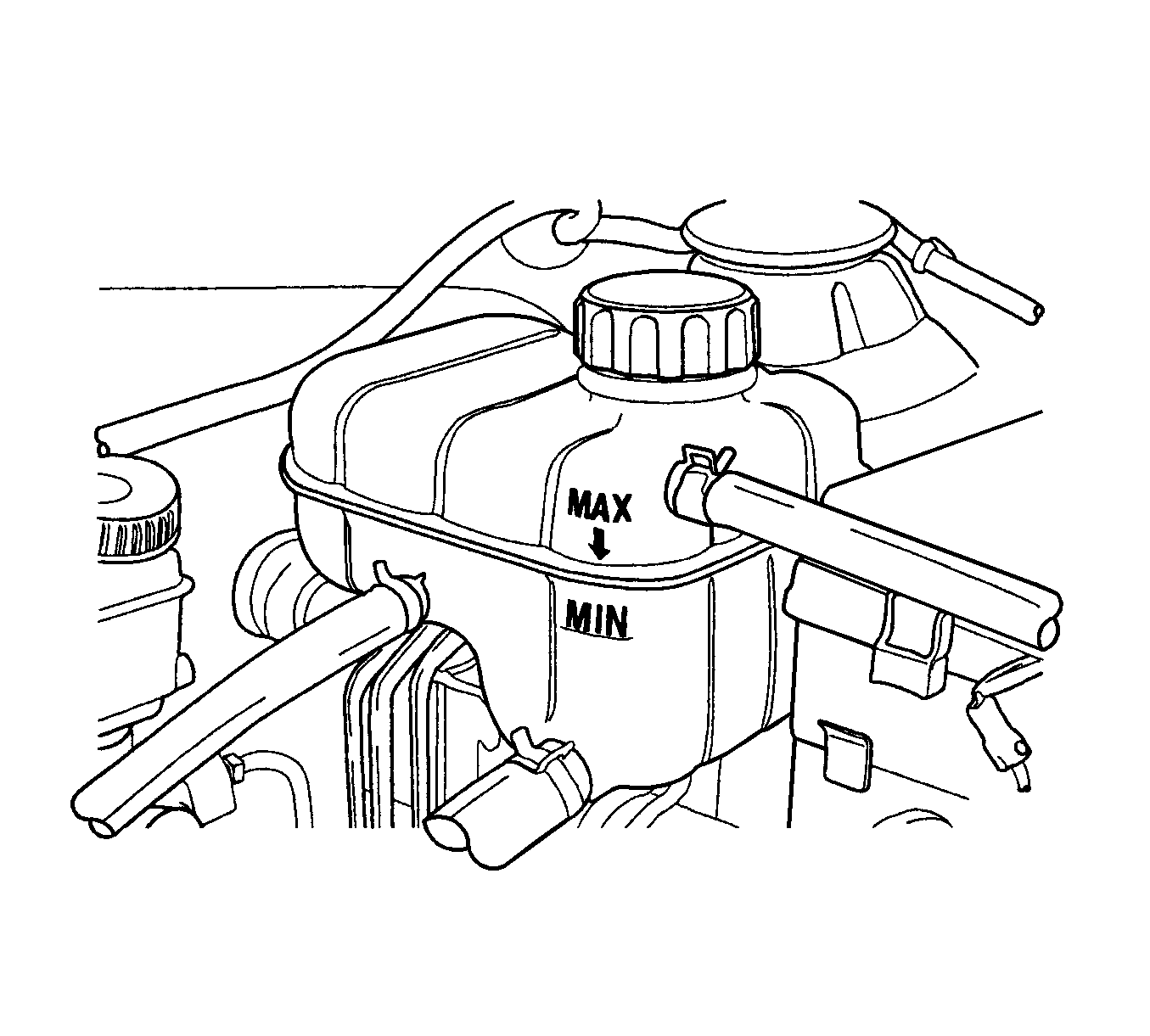For 1990-2009 cars only
Cooling System Draining and Filling Gasoline Engines
- Place a pan below the vehicle to catch the draining coolant.
- Remove the surge tank cap.
- Unplug the drain cock.
- Catch the escaping fluid in a drain pan.
- Remove all sludge and dirt from inside the surge tank. Refer to Radiator Surge Tank Replacement .
- Plug the drain cock.
- Add the clean water to the surge tank.
- Fill the tank slowly so that the upper reservoir hose remains above the water line. This allows the air inside the cooling system to escape.
- Start the engine.
- Run the engine until the thermostat opens. You can tell the thermostat is open when both radiator hoses are hot to the touch.
- Stop the engine.
- Repeat steps 1-9 until the drained water is clear and free of coolant and rust.
- Fill the cooling system through the surge tank with a mixture of ethylene glycol antifreeze and water. The mixture must be at least 50 percent antifreeze, but not more than 60 percent antifreeze.
- Fill the surge tank to the specified MAX fill mark on the outside of the tank.
Caution: Refer to Radiator Cap Removal Caution in the Preface section.

Caution: Dispose of the used engine coolant properly. Store the used coolant in a used coolant Holding Tank awaiting proper disposal or recycling. Do not pour used coolant down the drain. Ethylene glycol antifreeze is a very toxic chemical. Disposal into the sewer system or into the ground water is both environmentally irresponsible and illegal

Important: Never use an antifreeze mixture more concentrated than 60 percent antifreeze to 40 percent water. The solution freezing point increases above this concentration.
